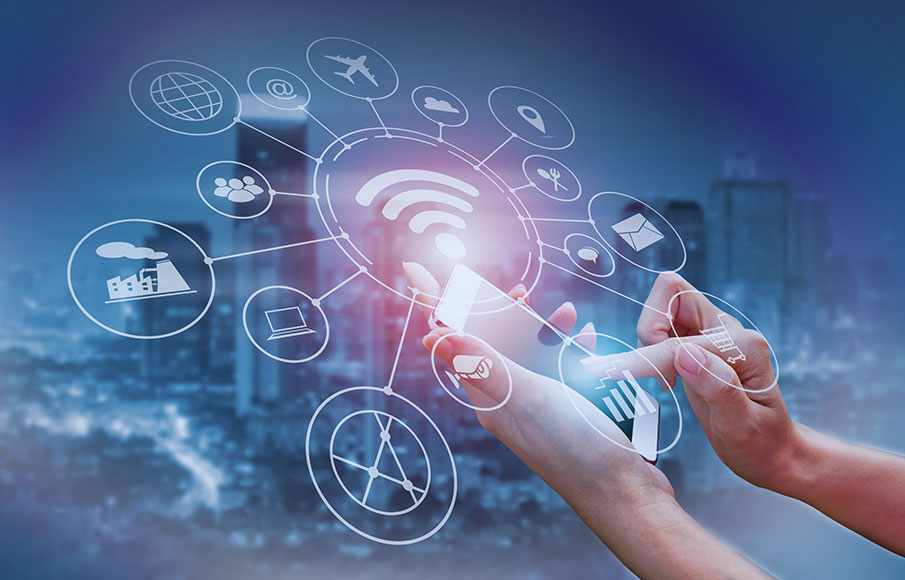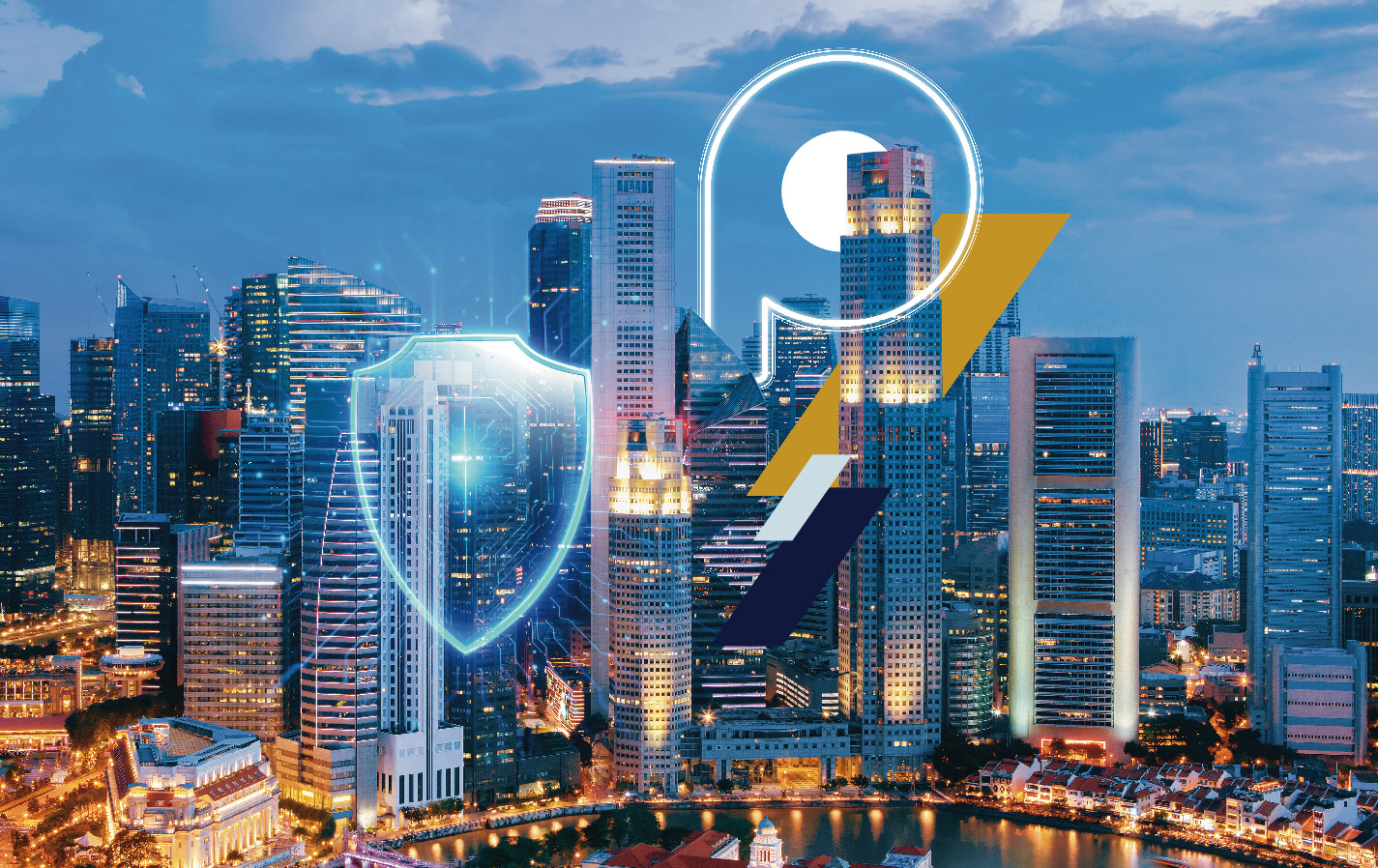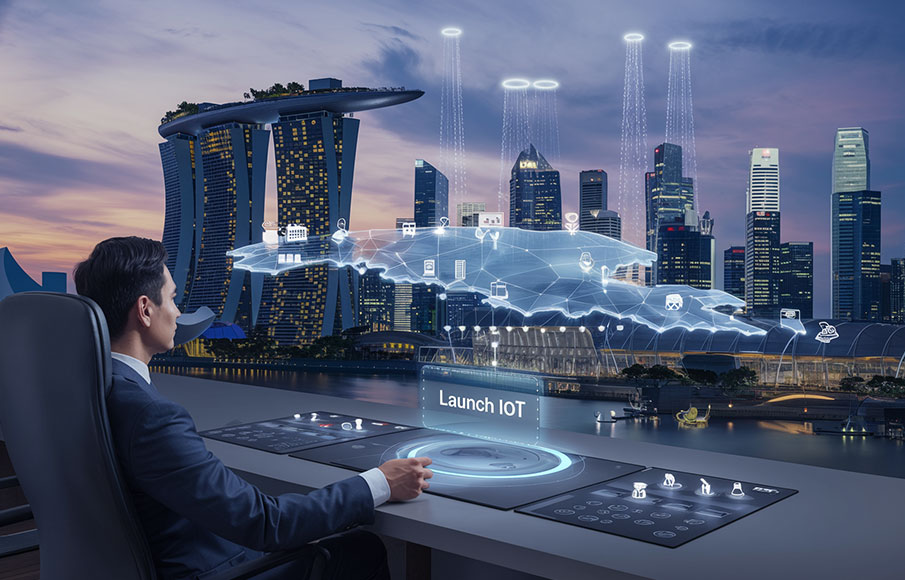Future Development of IoT in Singapore – 2025 & Beyond
- 09 June 2025

The Internet of Things (IoT) industry is experiencing rapid growth and creating remarkable potential for the future. By 2025, it’s projected that there will be 42 billion IoT-connected devices globally, making it highly prevalent in daily life. From sectors like healthcare, manufacturing, and transportation, to home and personal usage, IoT is continuing to revolutionise the way we live and work. This tremendous expansion is expected to hit a market volume of US$4,506.00m by 2029.
With such a massive paradigm shift in our near future, many Singaporean industries are quickly adapting and integrating these smart devices into the workflow. Read on to find out about future developments of IoT in Singapore, and how industries are using them to maximum effect.
What is IoT?

The Internet of Things (IoT) refers to a network of physical objects embedded with sensors, software, and other technologies that connect and exchange data with other devices and systems over the Internet. This concept integrates the digital and physical worlds, driving automation and data-driven insights across various domains.
These tools range from simple household items to intricate industrial IoT sensors. A single IoT device can include a smart home device, wearable technology like a smartwatch, and connected cars.
Key features of IoT include:
- Connectivity: Many IoT devices communicate with each other and central systems.
- Sensors: IoT devices can gather data from their environment.
- Data Processing: Collected data is analysed, often using Artificial Intelligence (AI).
The Growth of IoT In Recent Years

In recent years, IoT device usage has seen mass adoption across numerous fields. According to the International Data Corporation, investments into it the IoT field across the Asia Pacific region are projected to reach $435 billion in 2027, with a compound annual growth rate (CAGR) of 11.7% from 2023 to 2027. The bulk of IoT spending is put into services and systems, accounting for 40% of overall cost.
Integration with advanced technologies like 5G, AI, and edge computing has further accelerated IoT adoption. The implementation of 5G networks and edge computing enhances data transmission speeds, while AI provides advanced data analytics capabilities as well as machine learning. In order to power these technologies SPTel has launched the first Long-range Wide Area Networks (LoRaWAN) powered Sensor Network in Singapore, empowering businesses to use these tools.
The increasing level of interconnectivity provided by IoT paves the way for innovative and transformative applications as technology continues to evolve and mature.
IoT in Singapore’s Smart Nation Initiatives

Singapore has developed a Smart Nation Initiative, where the end-goal is to integrate digital technology in sectors such as health, transport, business, and government services. IoT is a major part of this goal, and connected devices help the Smart Nation Sensor Platform that’s actively being established.
Some examples of IoT use in Smart Nation Initiatives are:
- Personal Alert Buttons: A tool for seniors living alone, serving as an emergency device that sends signals to local care Elderly users can use this button to send out distress signals and make contact with medical staff, who are able to communicate with them quickly and responsively. This is useful in the event of falls or medical emergencies, and resolved 415 emergency cases between 2019 and 2021.
- eCanvas: An accessibility tool specialised in helping Persons with Disabilities paint using voice-controlled technology. By using neural networks and voice commands, eCanvas utilises IoT to serve as an assistive technology that opens new avenues for creative expression and artistic
- Open Digital Platform: A unified operating system for the Punggol Digital District. This system aims to connect multiple physical systems in residential areas, such as carpark gantries, traffic lights, and utility services. This seamless integration is meant to allow infrastructure to be digitally controlled, powering smart city aspirations.
Singapore’s efforts in IoT integration are forward-facing and place a heavy focus on smart city development, and is accomplished through consistent support between government agencies and tech sectors.
IoT in Economic and Business Opportunities

In Singapore, IoT technologies are pivotal for the city’s digitalisation initiatives, enhancing efficiency in industrial and business operations. Singapore’s government is actively supporting these advancements through various incentives, such as the 5G Innovation Programme.
Some of the benefits they bring are:
- Increasing Operational Efficiency: IoT applications optimise operations in sectors such as manufacturing and transportation, leading to significant cost savings. Through 24/7 tracking, they can allow an organisation to carry out predictive maintenance through advanced analytics, saving on costs and minimising disruptions.
- Lowering Utility Costs: IoT enables the automation of repetitive tasks, reducing the need for manual labour. For instance, smart sensors can monitor and control heating, ventilation, and air conditioning (HVAC) systems, ensuring optimal energy use without manual oversight. Automated lighting systems in commercial buildings adjust based on occupancy and daylight, further cutting energy expenses.
- Addressing Safety and Security Concerns: IoT technologies streamline logistics and supply chain management. Connected sensors track shipments in real-time, providing visibility into location and condition. This helps businesses optimise routes, achieve greater security, reduce delays, and ensure the integrity of goods. Video analytics are able to observe warehouses and enhance safety and security through constant monitoring.
Enabling such innovations that rely on 5G is SPTel’s Multi-Network SIM solution. This SIM will automatically switch across 5G networks to connect to the strongest signal, ensuring that users always retain high performance connectivity. This offers significant advantages for M2M and IoT deployments, and helps organisations attain network resiliency.
IoT is integral to Singapore’s Smart Nation push, and active development is encouraged through initiatives that promote the development of smart business solutions.
IoT in Education and Workforce Development

IoT holds the potential to enhance the educational experience and workforce development by creating interactive and adaptive learning environments. Schools and universities are implementing smart campus initiatives and IoT-enabled learning platforms to enhance collaboration among students while facilitating real-time interaction and multimedia engagement.
Some common usages of IoT in education and workforce training are in:
- Smart Campuses: The Singapore Institute of Technology is utilising IoT to construct a Smart Campus, where numerous sensors transmit information on foot traffic, light and energy consumption, and temperature. Through an Integrated Building Management System (IBMS), numerous aspects of the campus can be controlled remotely. Lifts, air-conditioning, and security can all be handled by AI and analytics systems, enhancing the campus experience.
- Increasing Efficiency: As an extension of smart campuses, IoT systems can enhance the experience of visiting a school campus, and make the day-to-day life of a student earlier. Some examples are smart parking space trackers and smart booking systems, which provide an easy platform for dealing with physical issues that may inconvenience a student on-campus.
- Cloud-based Learning & Digital Platforms: Online platforms such as Google Classroom, ClassDojo, and SkillsFuture can be used to supplement learning, with the latter being used by government as an upskilling and development initiative for the workforce. These tools help to connect students and provides them with a unified communication platform.
Educational institutions are incorporating IoT technologies into their curricula and campus. This approach prepares students for industries that increasingly rely on tech-driven solutions. Government initiatives such as GovTech Digital Academy also support the development of IoT competencies, helping create a skilled workforce ready to tackle the increasing technological demands of the future.
Shaping Tomorrow’s Connected World With SPTel

As we move into the digital future, IoT technology will take on a greater role in society. Urban sustainability, energy usage, waste management, and public safety can all benefit greatly from this integration.
It is imperative that businesses and organisations start taking the first steps towards IoT adoption to ensure that they do not get left behind. Through the facilitation of an IoT-as-a-Service Platform, SPTel provides a one-stop solution for businesses looking to obtain the benefits of IoT without extensive setup costs and deployment time. The subscription-based model supports the operational requirements of users and allows them to tap into the network with multiple devices.
Organisations seeking to leverage this technology can make use of SPTel’s advanced IoT capabilities and offerings to drive their digital transformation. By providing robust IoT solutions such as an IoT-a-a-S platform, Long-range Wide Area Networks (LoRaWAN) powered Sensor Networks, Multi-Network SIM and Edge Cloud Computing, SPTel helps businesses enhance their operational efficiency and reduce costs. This digital empowerment paves the way for smarter living and an interconnected future for all.
To accelerate your IoT adoption journey, reach out to us here.












